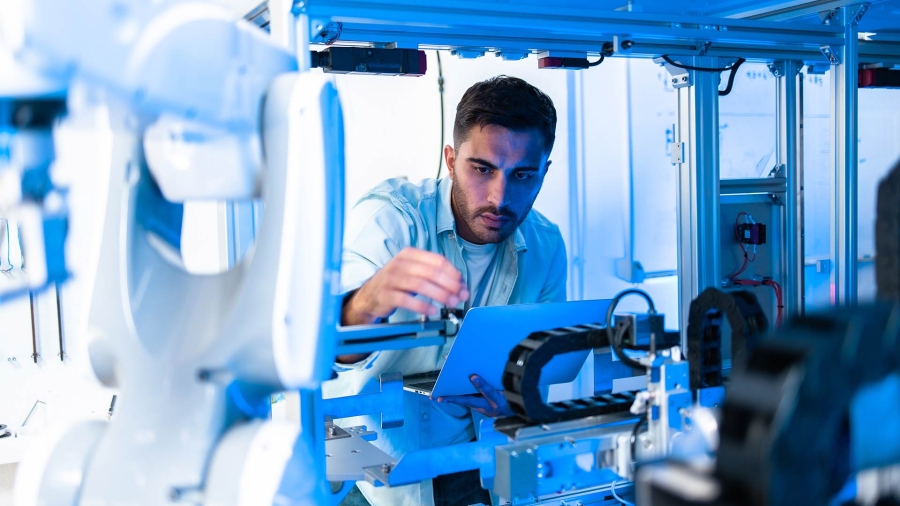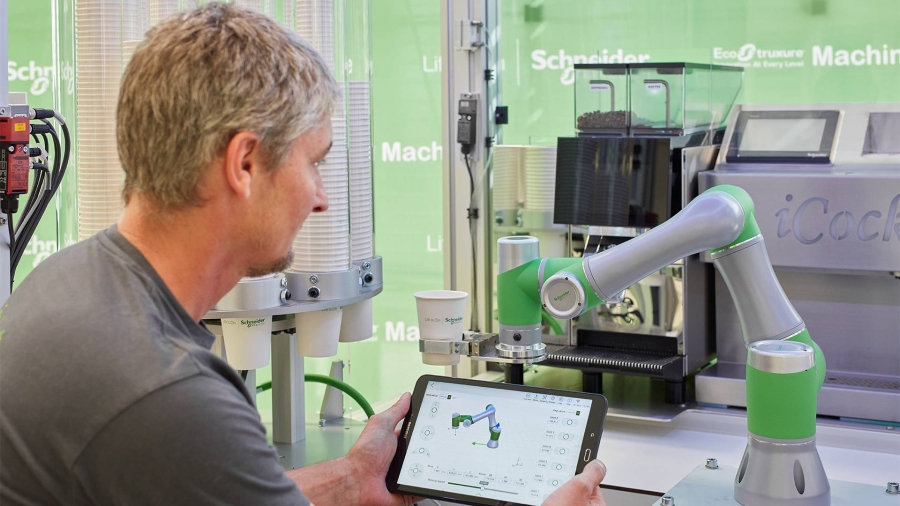By Mo Ahmed, Global Segment Solutions – Metals, Schneider Electric
Digital technologies are dramatically improving the way that organisations operate. Steel and metal manufacturers face a huge opportunity to transform their operational model by implementing digital technology. Not only does this help in the day-to-day running of the manufacturing process, but it also improves efficiency, profit margins, asset performance management and can even enhance sustainable practices.
Digital transformation unlocks the potential of your assets and empowers you to adopt predictive maintenance strategies. New technologies can help organisations to identify subtle changes in system behaviour which could be the early warning signs of diminished equipment performance or potential failure. It can also detect anomalies, create alerts and send notifications. With the ability to look ahead, you can prevent costly failures, reduce downtime, and focus on shaping what’s next.
When focusing on the steel industry, steel producers are concentrating on how new technologies such as AI and predictive analytics can help them increase the quality of materials and maintenance. The financial benefits of AI are top of their mind. AI can help predict the problems with the quality or health of equipment which will, in turn, have a significant financial benefit, improving production and ROI.
Industry rebound
Manufacturers are under extreme pressure to improve production efficiencies regardless of the turbulence caused by the geopolitical struggle playing out in front of the world. However, due to the uncertainties in recent years, many producers have limited their discretionary capital spending unless the project promises a very fast ROI, which has left some opportunities on the table when it comes to long term business sustainability.
Most recently, however, the situation has changed, and the industry is making a significant rebound when it comes to production. The strategic necessity of digital transformation can no longer be ignored.
For example, China cut its steel capacity which has helped boost global prices. The US imposed section 232 tariffs and import quota system, making it harder for imports to flow into the country and lifting US steel prices even further. Manufacturers became profitable again – the US steel price index is running nearly 170% higher than China’s price index and 65% higher than the European index. Add to that the low cost of energy in the US, a large market of steel scrap and efforts at deregulation and it all adds up to making the US an attractive destination for steel investments once again.
The evidence can also be seen in the fact that steel plant construction is once again on the rise, and previously shuttered plants are now being restarted and revamped to expand capacity, accounting for an estimated $12.9 billion in new investment and the creation of 6700 jobs.
Enter: Digitalization
It’s all great news for an industry that has seen its share of hard times, but it raises one important question. How are these plants going to operate given that the skilled workforce that used to run everything has moved on to other jobs, other industries, or into retirement?
The answer is digitalization. Digitalization offers enormous potential, but the industry needs to embrace Industry 4.0 and the digital transformation to enjoy all the benefits that it can deliver.
As an example, robotics has made good inroads. The use of industrial robots in steel plants is growing at 55% per year, where they are being used to replace manual labour in repetitive or hazardous tasks. Another example is the introduction of Artificial Intelligence (AI) to perform sophisticated process analysis to improve plant performance.
And now there are fully autonomous trolley cranes, not just automated cranes, that can not only help solve the workforce gap but do so at higher levels of productivity and safety. From stock storage management to fully automated crane operations, this technology will reduce the need for crane operators and allow plant management to reallocate those valuable human resources to other areas where their skills and experience can be used to fill roles steel producers have had difficulty in filling.
Achieving significant ROI
Companies that recognize the opportunity and act now will give themselves a competitive advantage that will last long into the future, and those that don’t will inevitably risk falling behind their competitors.
A notable area where significant ROI can be achieved is in crane operations. Crane operations have a drastic impact on the entire steel manufacturing process, especially when you consider the age and lack of technology embedded in most systems operating today. Cranes are often more than 30 years of age and running with rudimentary technologies embedded, including hardwired relay logic, contactors and direct-on-line motors, and often with limited monitoring.
This makes for significant potential to improve efficiency, productivity, and safety, as well as reduce product mishandling (resulting in product quality and damages) and downtime. Digitization can make this a reality. Enhancing operations will deliver an estimated increase in efficiency of between 50 to 60% simply by eliminating bottlenecks and issues in material handling.
Take a step-by-step approach
Companies who recognize the opportunities of digital technologies and act now will give themselves a competitive advantage that will last long into the future, and those that don’t will risk falling behind. Taking a step-by-step approach, from evolutionary to revolutionary technologies, is a realistic strategy for the resources industry today that will help the sector in the long term.
This piece was first published by Steel Times International in December 2021.














